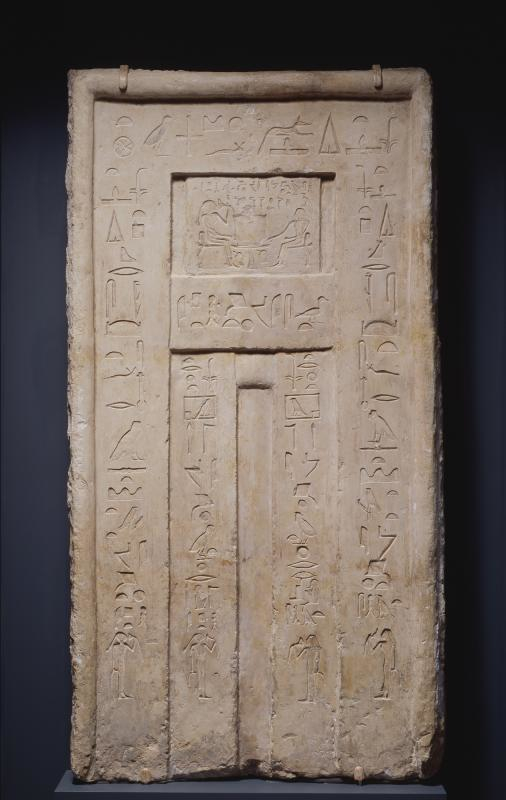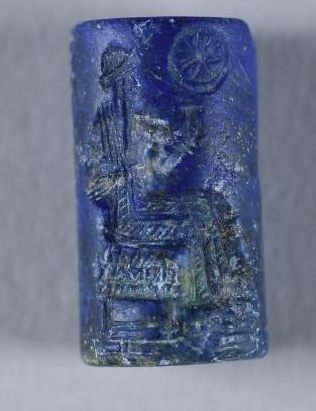The unique geology of the Near East is not defined by one major tectonic interaction. Instead, it is the result of many small plates interacting which over thousands of years have rifted, converged, and slid past each other to create a region with diverse rock formations. In the breakup of Pangea, much of the Near East was periodically submerged beneath a mighty Ocean known as the Tethys Sea. This allowed for a rich deposit of marine fossils and favorable conditions for the formation of the sandstones and limestones that characterize the region. Other plate movements created high-pressure environments where these sedimentary rocks became chemically altered, metamporphisizing them into rocks such as granite and greywacke.

Limestone is a sedimentary rock composed primarily of calcium carbonate, primarily in the form of calcite. Many limestones are formed from the fossilized remains of shells or coral reefs. Egypt is rich in limestone, having been periodically flooded by what is known as the Tethys Sea, of which the Mediterranean basin is a small remnant.
Calcite (calcium carbonate) is a mineral that is an important building block for limestone and other rocks. Calcite has a hardness of 3 on the Mohs scale, making it easy to carve. Ancient Egyptians used wooden headrests when sleeping to avoid household pests like scorpions. This headrest could have been made for use in a tomb, as a more permanent representation of the headrest its owner used in life.
As the name suggests, calcite is a mineral form of Calcium. Calcite is the primary component of limestone (>95%) but has a noticeably higher luster and smoothness because it lacks silica, feldspar, clays, and other mineral constituents found in limestone which distrupt the calcite matrix.
Greywacke is a coarse-grained sedimentary rock that is a mixture of quartz (silicon dioxide), feldspars (aluminum silicates), and rock fragments held together with clay. In ancient Egypt, black symbolized both the underworld and the potential for new life, since the annual flooding of the Nile left behind fertile black soil. In the Old Kingdom, greywacke was typically reserved for royal portraits, but it was more widely used by the time this sculpture was made, roughly 2000 years later.
Greywacke is a form of sandstone characterized by its hardness, dark color, and composition of gravel, sand, and mud. A typical sedimentary rock formation would not have such different sized particles deposited in the same matrix because sediments are typically sorted based on mass and volume which impact a particle’s ability to move freely. Greywacke’s unique composition is the result of submarine avalanches which disturbed the typical deposition process. Because of its turbulent origin, greywacke often forms on the edges of continental shelves or in oceanic trenches.
Granite is an intrusive igneous rock, formed when magma cools slowly under the Earth’s surface. It can be red, pink, black, or a mixture of colors, depending on its mineral composition. Granite had to travel long distances from quarries in the desert to settlements along the Nile. Using granite for royal buildings and sculptures allowed Egyptian rulers to illustrate their control over the country.

The red granite used in this sculpture is a hallmark of Egyptian art. Known as Aswan granite after the city where it is found, this rock has only a single source in Egypt despite being used widely in Egyptian art. Located at the first cataract of the Nile, Aswan was the Southern gateway to Egyptian civilization as the furthest point on the Nile that could be easily navigated to from the Mediterranean and the border between Upper Egypt and Lower Nubia.

In ancient Egypt, black symbolized both the underworld and the potential for new life, since the annual flooding of the Nile left behind fertile black soil. Obsidian amulets like this one are typically found in mummy wrappings. Beginning in the New Kingdom (c. 1550-1070 BC), funerary texts described the gods judging the dead by weighing their hearts. Heart-shaped amulets like this one were meant to help guide the dead into the afterlife.
*this actually looks like pitchstone? all I can see is the picture but it doesn’t look as glassy as I would expect
Obsidian is a volcanic glass composed of mainly of silica that exits a volcano towards the end of a volcanic eruption when other minerals and water have already been expunged. Unlike other examples of obsidian in the collection such as the cores from Guatemala and Melos, this object was not found near its geological source. Egypt has no volcanoes and no sources of obsidian. The material in this object would have been imported from neighboring civilizations then processed within Egypt to create this culturally specific object.

Lapis lazuli is a metamorphic rock. Its blue color comes from the minerals lazurite or hauyne, and the white spots come from calcite and other minerals. Cylinder seals like this one were used to sign documents, and were one of their owners’ most important possessions. Lapis lazuli was valuable in the ancient Mediterranean because of its rarity. Most of the stone came from Sar-e-Sang in present-day Afghanistan, and arrived in the Near East through complex ancient trade routes.
Though valued for its beauty as a gemstone, lapis is often processed into ultramarine, the most expensive and vivid of blue pigments available to artists until the chemical synthesis of Prussian blue in the 18th century. This rich blue color from the lazurite in lapis forms due to a chemical reaction with the sulfur atoms in the crystal matrix. This change occurs due to contact metamorphism between limestone and granite. Lapis is incredibly rare, with only four known sources and all lapis used in antiquity including this seal was sourced from the Badakhshan province in the eastern mountains of Afghanistan.
